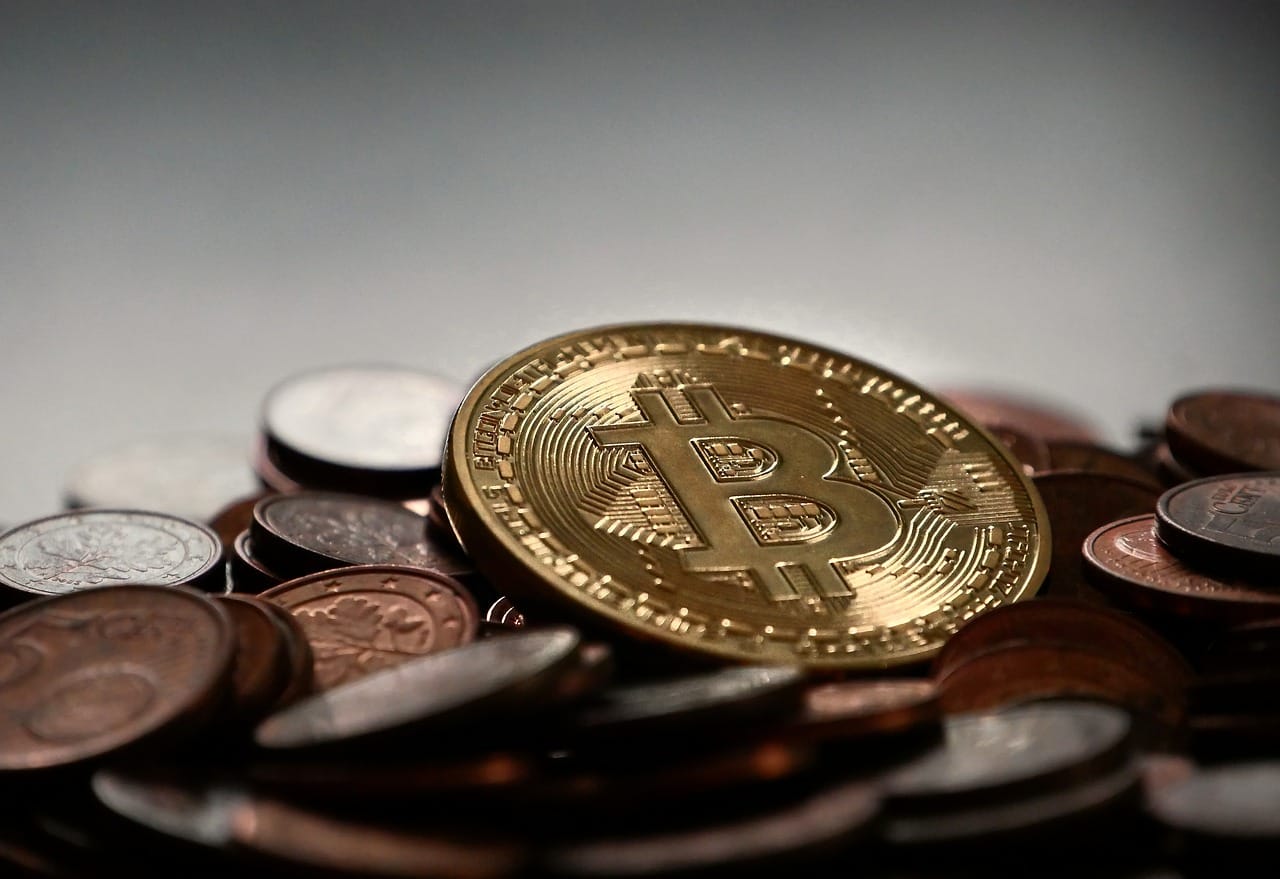What is cryptocurrency and how does it work?
Discover what cryptocurrency is and how it works, from the evolution of money to the rise of digital transactions and blockchain technology.

The Evolution of Money: From Barter to Digital Transactions
Money has come a long way. From bartering goods to swiping digital wallets, the way we exchange value has transformed dramatically. In this post, we'll explore the major milestones in the evolution of money, including the barter system, commodity money, paper money, and the rise of digital transactions.
Barter System and Its Limitations
The barter system is where it all started. In ancient times, people traded goods and services directly.
For example, if you had a cow and needed wheat, you’d find someone who had wheat and wanted a cow. Simple, right?

But there were some serious limitations:
- Double coincidence of wants: Both parties needed to want what the other had.
- Indivisibility of goods: Some items couldn’t be divided without losing value.
- Lack of a common measure of value: Determining fair trades was tough.
- Perishability: Many goods couldn’t be stored long-term.
These limitations made barter inefficient for growing economies. Enter commodity money.
Introduction of Commodity Money
Commodity money solved many barter problems. Societies started using items with intrinsic value as money—think gold, silver, and other precious metals.
Why gold and silver?
- Durability: They don’t spoil or wear out easily.
- Divisibility: They can be melted and divided into smaller units.
- Recognizability: Their value was widely accepted.
- Portability: Easier to carry than a cow or sack of wheat.
Gold and silver coins became the standard, allowing trade over larger distances and among diverse groups.
However, carrying around heavy metal coins had its own issues.
Transition to Paper Money and Fiat Currency
To address the limitations of metal coins, paper money was introduced. Initially, paper money was backed by commodities like gold or silver. This was the gold standard.

But why switch to paper money?
- Convenience: Easier to carry than heavy metal.
- Standardization: Simplified transactions with standardized notes.
- Security: Easier to protect and store.
Eventually, many countries moved to fiat currency—money not backed by a physical commodity but by government decree. This shift allowed for more flexible monetary policies.
Fiat currency advantages:
- Economic flexibility: Central banks could manage the money supply better.
- Stability: Governments could respond to economic crises more effectively.
- Growth: Facilitated the development of modern banking and financial systems.
Yet, even with paper money, the financial world continued to evolve.
The Rise of Digital Transactions
Welcome to the digital age. Today, digital transactions are transforming how we handle money.
Digital money includes:
- Online banking: Manage finances without setting foot in a bank.
- Credit and debit cards: Quick, convenient, and widely accepted.
- Digital wallets: Services like PayPal, Apple Pay, and Google Wallet.
- Cryptocurrencies: Bitcoin and other digital currencies using blockchain technology.
Why digital transactions rock:
- Speed: Instantaneous transactions across the globe.
- Convenience: Pay with a tap or a click, no physical money needed.
- Accessibility: Financial services available to more people.
- Security: Advanced encryption and blockchain technology.
Digital money is not just the future; it’s the present. And as technology continues to advance, so will the ways we exchange value.
So, what is Cryptocurrency?
Cryptocurrency is a digital or virtual currency that uses cryptography for security. Unlike traditional currencies issued by governments (think USD, EUR, etc.), cryptocurrencies operate on technology called blockchain, a decentralized ledger that records all transactions across a network of computers. This decentralized nature means that no single entity, like a bank or government, has control over the currency.

In a nutshell:
- Decentralized: No central authority controls it.
- Digital: Exists only in electronic form.
- Secure: Uses cryptography for security.
Now that you know what cryptocurrency is, let's take a trip through its history.
The Genesis of Cryptocurrency
Early Digital Cash Concepts
The idea of digital cash isn't new. It dates back to the 1980s and 1990s, with projects like DigiCash and B-Money trying to create a form of electronic money. However, these early attempts didn't gain traction, mainly due to technological limitations and the lack of a robust solution to the double-spending problem (where the same digital token could be spent more than once).
Enter Bitcoin
The real game-changer came in 2008. Amid the global financial crisis, an individual (or group) using the pseudonym Satoshi Nakamoto published a whitepaper titled "Bitcoin: A Peer-to-Peer Electronic Cash System."
Key Innovations of Bitcoin:
- Decentralization: No central authority controls Bitcoin.
- Blockchain: A public ledger that records all transactions.
- Proof-of-Work: A consensus mechanism to validate transactions and prevent double-spending.
In January 2009, Nakamoto mined the first block of the Bitcoin network, known as the genesis block. This marked the official launch of Bitcoin and the beginning of a new era in digital currency.
Early Adoption and Growth
Bitcoin started gaining traction among a niche group of enthusiasts who believed in its potential. The first real-world Bitcoin transaction happened in 2010 when a programmer named Laszlo Hanyecz paid 10,000 BTC for two pizzas. Back then, this amount was worth around $30. Today, those 10,000 BTC are worth millions.

Why Bitcoin gained popularity:
- Limited Supply: Only 21 million bitcoins will ever be created, making it a deflationary asset.
- Decentralization: No government control or interference.
- Transparency: All transactions are recorded on the blockchain.
The Rise of Altcoins
Bitcoin’s success inspired the creation of alternative cryptocurrencies, commonly known as altcoins. These new digital currencies aimed to improve upon Bitcoin’s design or cater to specific use cases.
Notable Altcoins
- Litecoin (LTC): Created by Charlie Lee in 2011, Litecoin aimed to be the "silver to Bitcoin’s gold." It offered faster transaction times and a different hashing algorithm.
- Ethereum (ETH): Launched by Vitalik Buterin in 2015, Ethereum introduced the concept of smart contracts and decentralized applications (dApps), expanding the potential uses of blockchain technology.
- Ripple (XRP): Focused on enabling real-time, cross-border payments for financial institutions, Ripple aimed to revolutionize the banking sector.
These altcoins brought new features and capabilities to the cryptocurrency ecosystem, further driving its evolution and adoption.

Is Crypto Real Money?
Cryptocurrencies are often seen as a revolutionary form of money, but are they truly "real" money? To answer this, we need to understand what constitutes money and how cryptocurrencies measure up against traditional definitions.
What Makes Money "Real"?
For something to be considered money, it typically needs to fulfill three functions:
- Medium of Exchange: It must be widely accepted for transactions.
- Store of Value: It must retain value over time.
- Unit of Account: It must provide a standard measure of value.
Cryptocurrency as a Medium of Exchange
Cryptocurrencies like Bitcoin and Ethereum are increasingly accepted by merchants and service providers around the world. You can buy everything from coffee to luxury cars using crypto. However, their acceptance is not yet universal, which limits their use compared to traditional currencies.
Cryptocurrency as a Store of Value
The volatile nature of cryptocurrencies can make them a less reliable store of value. While Bitcoin has appreciated significantly over the long term, it has also experienced drastic price swings. This volatility can be a double-edged sword: it's great for speculative gains but risky for preserving wealth.
Cryptocurrency as a Unit of Account
While some businesses price their goods and services in cryptocurrencies, most still use traditional currencies. The fluctuating value of crypto makes it difficult to use as a stable unit of account. However, as adoption grows and volatility potentially decreases, cryptocurrencies could become more standardized.
Is Cryptocurrency Good or Bad?
The debate over whether cryptocurrency is good or bad is multifaceted, involving financial, technological, and ethical considerations. Let's break down the pros and cons.

The Good
- Financial Inclusion: Cryptocurrencies can provide financial services to the unbanked and underbanked populations, offering access to financial systems without traditional banks.
- Decentralization: The lack of a central authority can reduce the risk of corruption and manipulation, promoting transparency and security.
- Lower Fees: Crypto transactions can be cheaper and faster than traditional banking and remittance services, especially for cross-border transfers.
- Innovation: Blockchain technology, the backbone of cryptocurrencies, has the potential to revolutionize various industries, from finance to supply chain management.
The Bad
- Volatility: The price of cryptocurrencies can fluctuate wildly, posing risks for investors and making everyday transactions unstable.
- Regulatory Uncertainty: Governments are still figuring out how to regulate cryptocurrencies, leading to legal and operational uncertainties.
- Security Risks: While blockchain technology is secure, the crypto space has seen numerous hacks, scams, and frauds, resulting in significant financial losses.
- Environmental Concerns: Mining cryptocurrencies, particularly Bitcoin, consumes a vast amount of energy, raising environmental sustainability issues.
Is Crypto a Good Investment?
Investing in cryptocurrencies can be both exhilarating and nerve-wracking. Let’s explore whether crypto is a good investment for you.
The Upside
- High Returns: Early investors in Bitcoin, Ethereum, and other cryptocurrencies have seen astronomical returns, turning modest investments into substantial wealth.
- Diversification: Cryptocurrencies can diversify an investment portfolio, providing exposure to a unique asset class that is not directly correlated with traditional markets.
- Innovation Potential: Investing in cryptocurrencies is also an investment in the underlying blockchain technology, which holds promise for future technological advancements and applications.
The Risks
- Volatility: Cryptocurrencies are known for their extreme price volatility, which can lead to significant gains but also substantial losses.
- Lack of Regulation: The regulatory landscape for cryptocurrencies is still evolving, and changes in regulation can have dramatic effects on the market.
- Security Issues: Despite the security of blockchain technology, individual investors can still fall victim to hacking, phishing, and other cyber threats.
- Market Maturity: The cryptocurrency market is still relatively young and can be influenced by market sentiment, media coverage, and the actions of large holders (whales).

Who Should Consider Investing?
Cryptocurrency investments might be suitable for:
- Risk Takers: Those who are comfortable with high-risk, high-reward scenarios.
- Tech Enthusiasts: Individuals who believe in the long-term potential of blockchain technology.
- Diversifiers: Investors looking to add a unique asset class to their diversified portfolios.
However, it's crucial to do thorough research, understand the risks, and only invest money that you can afford to lose.
Cryptocurrencies represent a fascinating evolution in the concept of money.
While they offer significant advantages in terms of financial inclusion, decentralization, and innovation, they also come with notable risks, including volatility and regulatory uncertainty.
Whether cryptocurrencies are "real" money or a good investment depends largely on your perspective and risk tolerance.
As the market continues to mature, cryptocurrencies will likely play an increasingly important role in our financial systems and investment strategies.




